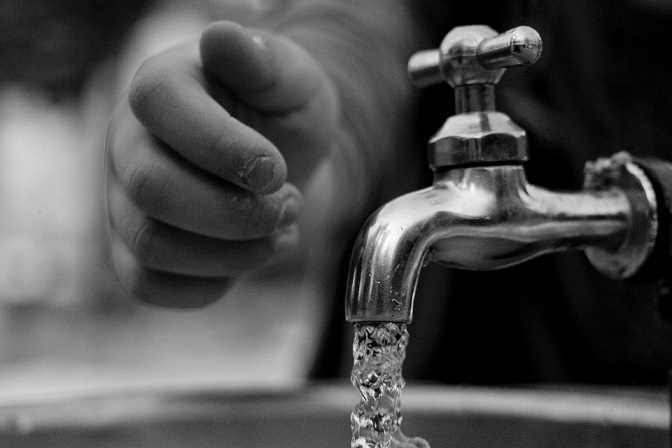While sky-blue vans make daily deliveries of huge plastic water-cooler jars to offices, embassies and ornate private homes in the affluent areas of Kabul, most of the 5 million inhabitants of Kabul do not have access to clean water.
Dusty, unpaved streets where war refugees camp in muddy vacant lots are ringed by trenches of foetid wastewater and in many areas people are digging deeper and deeper wells in their yards, and some are even building their own septic tanks, although the norm is more likely to be a simple latrine.
There is no formal water or sewer system, and that which still remains is strained by constant apartment construction for the influx of people into the area. This results in well-water often mixing with sewage underground, contaminating the drinking water.
While the government health officials say the water is fine and people are exaggerating, media sources have reported that Kabul’s water is becoming dangerously contaminated and there have been reports of more and more people being stricken with diarrhoea in hot weather.
A survey of household water connections in Kabul by the National Environmental Protection Agency in March found high levels of E. coli bacteria in five of 22 sites tested. According to the report, 77% of samples taken do meet World Health Organisation (WHO) standards, but the scope of the survey was cut back by half due to a lack of chlorine and laboratory supplies.
While Kabul is surrounded by various sources of pristine water, including dams on powerful rivers in two nearby provinces and the snow-capped Hindu Kush mountains, transporting and delivering fresh water from these sources is expensive and a risky undertaking.
Sardar Wali Malikzal, director of the Afghan Urban Water Supply and Sewer Corp. said:
Afghanistan has the best and sweetest water in the world. It is safe to drink, and we have a lot of it. But there are 5 million people in the city now, and we all have to take responsibility. Most diseases come from polluted water, so water needs to be filtered. Wells and septic systems have to be standardised.
The challenge is not the water itself, he added. It’s management, and it’s money.
Rent water coolers and buy water dispensers from Living-Water.






